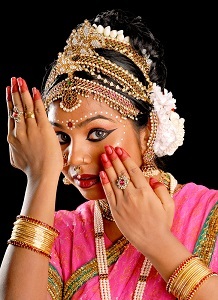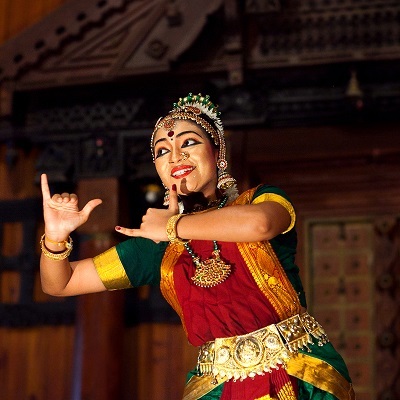

 The Sanskrit word rasa can refer to sap, juice, essence, water, flavour, taste, relish, and sentiments, among other things. It has been used to refer to Brahman in the Upanishads. The word rasa describes the poet's creative processes, the reader's appreciation of aesthetics, and the vast range of emotions that are expressed in the poem. The phrase in poetics refers to both the poem's objective structural focus and the poet's and the reader's subjective sensations.
The Sanskrit word rasa can refer to sap, juice, essence, water, flavour, taste, relish, and sentiments, among other things. It has been used to refer to Brahman in the Upanishads. The word rasa describes the poet's creative processes, the reader's appreciation of aesthetics, and the vast range of emotions that are expressed in the poem. The phrase in poetics refers to both the poem's objective structural focus and the poet's and the reader's subjective sensations.
Every artist makes an attempt to produce art that evokes the viewers' emotions and, as a result, has an emotional impact. And the audience member similarly attends a show only for this enjoyment. Therefore, the goal of any performance is to evoke an emotional response or an aesthetic experience in the audience rather than to transmit or exchange information, knowledge, or intent. According to the viewer, performance is better the more intense the emotional experience.
For the success of the artwork, an artist should therefore place the most emphasis on the structural elements of the building. The "Rasa Sutra," the cornerstone of Indian dramaturgy and the components for evoking an aesthetic experience in the audience, is mentioned in the Bharata's Natya Shastra. The most effective and comprehensive recipe for causing the viewer to feel anything.

According to Bharata, rasa is a type of emotion that the audience experiences through a work of art. Rasa realisation results from a specific sthayibhav. He holds that sthayibhav, a lasting emotion, changes into rasa, an aesthetic pleasure, or, to put it another way, sthayibhav gives rise to rasa.
Bharata contends that the achievement of rasa requires the right balance of vibhav, anubhav, and sancharibhav. A drama that successfully combines these bhava is perfect, rasa-filled, and enjoyable.
Bharata also emphasises audience characteristics through the idea of sahardya. Rasa is an exchange between the viewer and the artistic creation.
It is stated that the permanent emotional states alone might attain Rasa rank. There are eight of them.
The dominant state of love is the source of the erotic (Shringar) Rasa, which has its roots in the world's dazzling and brighter elements like whiteness, purity, and beauty. Bharata identifies light green colour and Vishnu deity for this Rasa.
The primary feeling of laughing serves as the foundation for the Comic (Hasya) Rasa. It comes from displaying unsightly attire or ornaments, impudence, greed, argument, or a malformed limb. Bharata identifies white colour and Pramuthus deity for this Rasa.
The grandeur, greatness, goodness, strength, and energy of exceptional types of people provide the foundation for the heroic (Veer) Rasa. It demonstrates mental focus, tenacity, diplomacy, discipline, military prowess, aggression, the reputation of might, and terrifying capacity, among other things. Bharata identifies light-orange colour and Indra deity for this Rasa.
The predominate state of amazement serves as the foundation for the Marvelous (Adbhut) Rasa. It is formed from factors like seeing heavenly beings or occurrences, obtaining the desired object, entering a superior palace, temple, or audience hall, and seeing illusory or magical deeds, among others. Bharata identifies the yellow colour and the Brahma deity for this Rasa.
The prevailing state of wrath serves as the foundation for The Furious (Roudra) Rasa. It is derived from factors like rage, rape, abuse, insult, falsity, allegation, envy, and others. Its sources are the Rakshasas, Danavas, and arrogant men. Bharata identifies red colour and Rudra deity for this Rasa.
The prevailing state of grief, anguish, and suffering serves as the foundation for the Pathetic (Karun) Rasa. It is derived from factors like suffering brought on by losing loved ones, getting divorced, losing one's job, dying in an accident, going through hardships, or being imprisoned. Bharata identifies ash-colour and Yama deity for this Rasa.
The dominating emotion in the Odious (Bibhatsa) Rasa is disgust. It comes from factors like hearing about unpleasant, repulsive, dirty, or destructive things or seeing and talking about them. On the stage, it can be depicted by effects like closing the mouth or stopping the motion of all limbs. Bharata identifies blue and Siva-muhukala deity for this Rasa.
The prevailing emotion of terror is the foundation of The Terrible (Bhayanak) Rasa. It is derived from factors like horrifying loudness, ghost sightings, panic attacks, nervousness, or the voices of owls and jackals, an empty home, a dark forest, discussions of violent crimes and murders, as well as horripilation, colour changes, voice loss, etc. Bharata identifies black and Kala deity for this Rasa.
According to Rasa Theory, the main objective is not to elicit Rasa or delight (artistic), but rather to amuse the audience. Instead, the main objective is to establish a parallel existence in front of the audience so that they might have a feeling of identity (i.e. Consciousness, spiritual and moral questions). Drama, which is a synthesis of all the arts, is what Bharatamuni considers to be the most ideal expression of aesthetic experience.
Q1. The famous critic of Natyashastra is?
Ans. Abhinav Gupta of the 11th century was one of the famous art critics and commentators of Natyashastra. His work was framed around Natyashastra but it is an independent work.
Q2. How is rasa different from Bhavas?
Ans. The word "becoming" is bhava. Rasa is the aesthetic flavour that emerges from Bhava, which is the mental condition. Without Rasa, the Bhava themselves have no significance. Rasa is thus essentially the shapes and manifestations of Bhava in the variety of feelings brought on by taste, emotion, and delight.
Q3. What is the importance of rasa in painting?
Ans. Rasa is the capacity for emotional gratification brought about by the characters, their expressions, and the circumstances depicted in a piece of art. The Sanskrit word "rasa" refers to the degree of emotional fulfilment that a work of art produces.